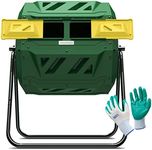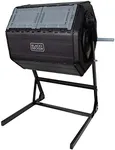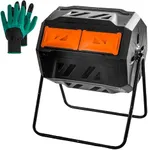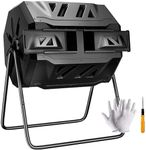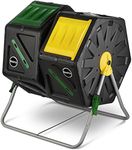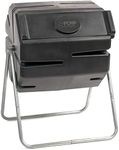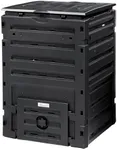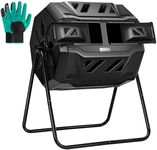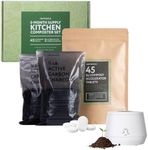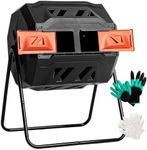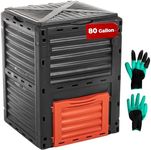Buying Guide for the Best Rotating Compost Bins
Choosing the right rotating compost bin can make your composting process more efficient and enjoyable. Rotating compost bins are designed to make turning and aerating your compost easier, which helps speed up the decomposition process. When selecting a rotating compost bin, consider the size, material, ease of use, and additional features that will best suit your composting needs and space. Here are some key specifications to consider when choosing a rotating compost bin.CapacityCapacity refers to the amount of compost material the bin can hold, usually measured in gallons or liters. This is important because it determines how much waste you can compost at one time. Small bins (up to 30 gallons) are suitable for individuals or small households with limited kitchen waste. Medium bins (30-80 gallons) are ideal for average households with moderate yard and kitchen waste. Large bins (over 80 gallons) are best for larger households or those with significant yard waste. Choose a capacity that matches the amount of compostable material you generate.
MaterialThe material of the compost bin affects its durability, weight, and how well it retains heat. Common materials include plastic, metal, and wood. Plastic bins are lightweight, resistant to weather, and generally more affordable, but may not be as durable as metal. Metal bins are sturdy and long-lasting but can be heavier and more expensive. Wooden bins are aesthetically pleasing and can blend into garden settings, but they may require more maintenance to prevent rot. Consider the climate and location where you will place the bin when choosing the material.
Aeration and VentilationAeration and ventilation are crucial for the composting process as they allow oxygen to reach the decomposing materials, speeding up the breakdown and reducing odors. Look for bins with built-in vents or aeration systems that ensure proper airflow. Some bins have adjustable vents to control the amount of air entering the bin. If you live in a humid area, better ventilation can help prevent excess moisture buildup. Choose a bin with good aeration features to maintain an efficient composting process.
Ease of UseEase of use includes how simple it is to load, turn, and empty the compost bin. Features like a sturdy handle or crank for turning, a wide opening for adding materials, and an easy-access door for removing finished compost can make the process more convenient. If you have physical limitations, look for bins with ergonomic designs that require less effort to turn. Consider how often you will be adding materials and turning the bin to find one that fits your routine.
Dual Chamber DesignA dual chamber design allows you to have two batches of compost at different stages of decomposition simultaneously. This is important if you want a continuous supply of compost, as you can add new materials to one chamber while the other chamber finishes composting. If you have a steady stream of compostable waste, a dual chamber bin can help you manage the process more efficiently. Choose a dual chamber design if you want to maximize your composting output.
Size and FootprintThe size and footprint of the compost bin refer to its physical dimensions and the amount of space it occupies. This is important if you have limited space in your garden or yard. Compact bins are suitable for small spaces like balconies or patios, while larger bins require more room. Measure the area where you plan to place the bin to ensure it fits comfortably. Choose a size that matches your available space and composting needs.

